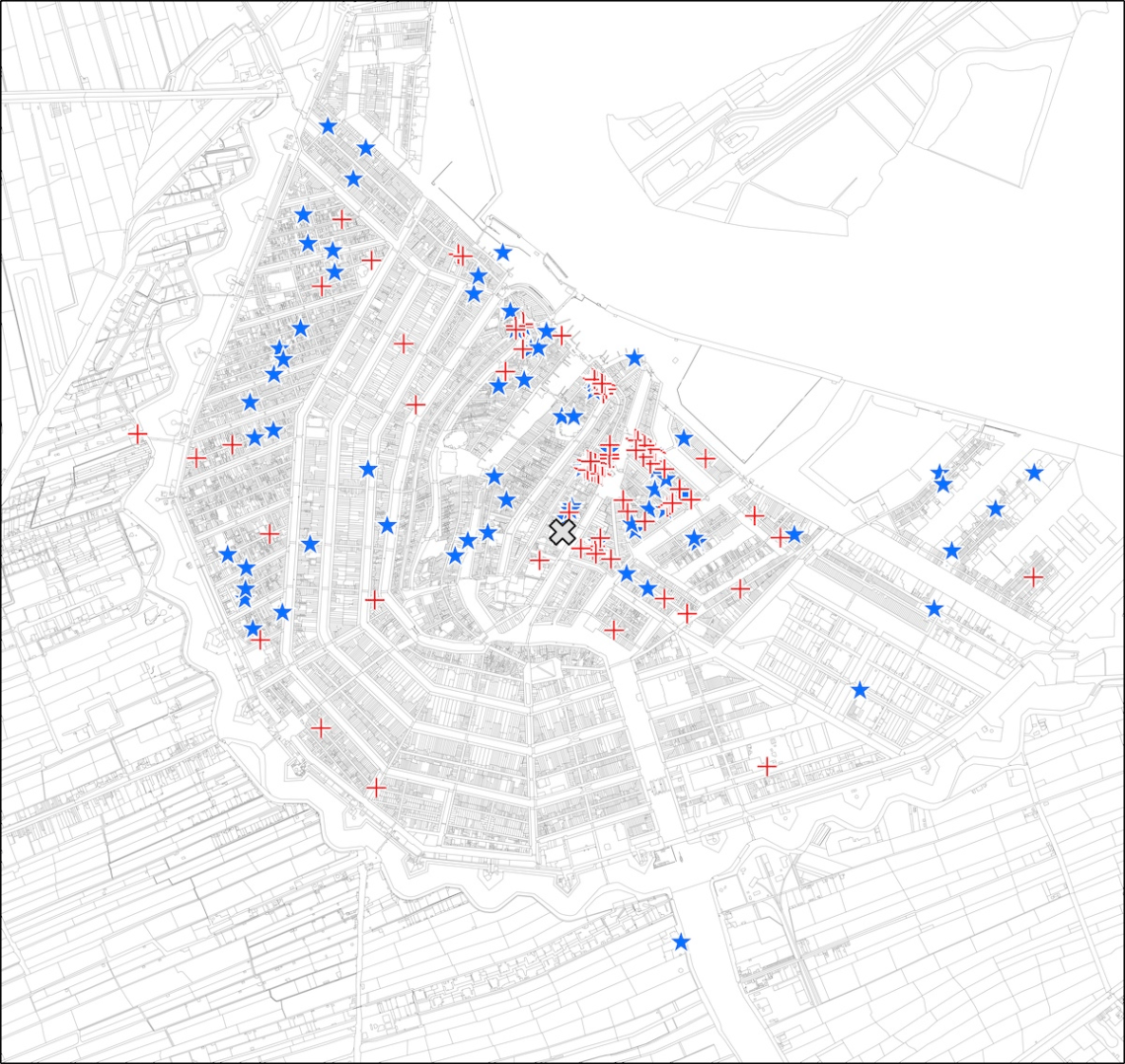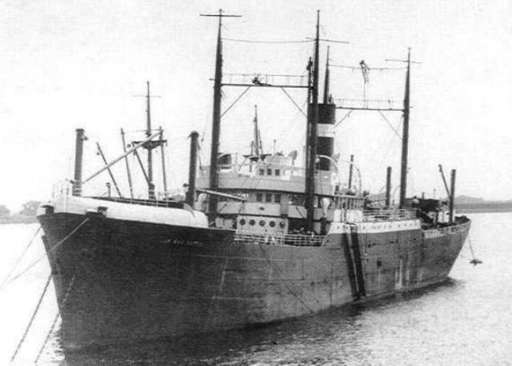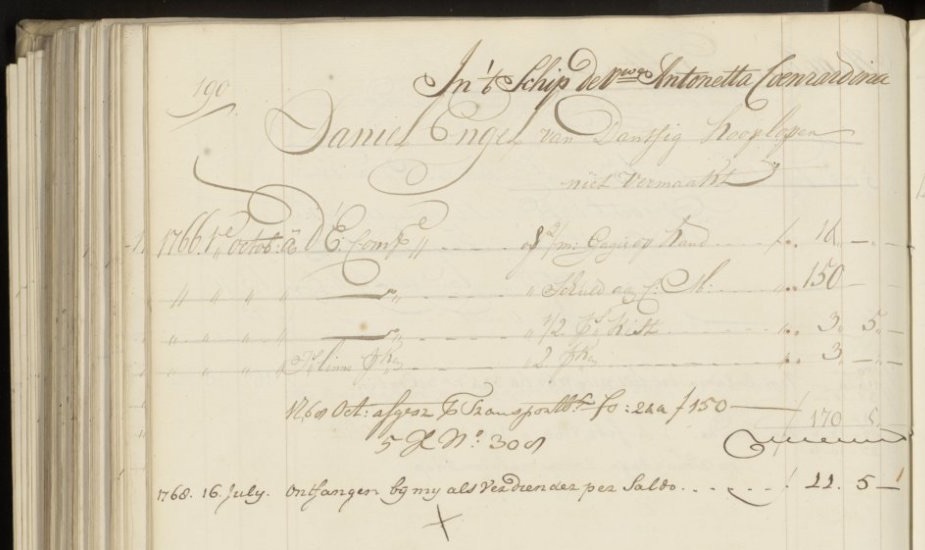-
VOC Sailors’ Last Days in Europe
Our new Dutch-language book, In de schaduw van de stad (Amsterdam: Ambo|Anthos 2023), which tells a series of short stories about ‘ordinary’ Amsterdammers through the ages, includes a chapter on sailors. We researched the crew members of three VOC ships that left Amsterdam in November 1775: who were they, where did they come from, where did they live or stay in Amsterdam? It was known that inns played an important role in the lives of many aspiring VOC sailors by providing a place to stay and information about finding work with the VOC. And it was also known that this was especially true for migrants. But we were surprised when…
-
English Seamen in the VOC
We recently wrote an article about English sailors in the service of the Dutch East India Company (VOC). They made up only a tiny fraction of the crews: during the eighteenth century, less than 1% of crew members came from England. This is a small number compared to, in particular, the Germans and Scandinavians. But this is explicable: the English economy offered plenty of jobs and high wages, so there was little reason for English sailors to come to the Republic. Moreover, Englishmen who sought an East Indian adventure would have been more inclined to join the English East India Company. It is precisely because of their small numbers that…
-
Grant for research on seamen and their international contacts
Great news: DutchCulture has awarded us a grant to document and present shared cultural heritage of merchant seamen who sailed on Dutch ships, 1600-2000. Before the age of cheap flights, the vast majority of Dutch who traveled to such faraway countries as Japan, India and Sri Lanka were sailors. Moreover, these seamen had often already come into contact with other cultures on the way to their destination, as the ships they manned usually employed many foreigners—initially mainly Germans and Scandinavians, later many Chinese, Indonesians and Philippines. With the DutchCulture grant, we are going to investigate the international contacts of merchant seamen who sailed on Dutch ships, 1600-2000: how and to…
-
Reconstructing the career of a 20th-c sailor: the case of Wilfried Julius Lackin
In an earlier post, we explained our methodology for reconstructing careers of sailors from 18th-c data. In this one, Daniël Tuik, researcher on our ongoing Sailors on Dutch merchant marine in the 19th and 20th centuries project, tells about his work with the personnel files of the Koninklijke Nederlandse Stoomboot-Maatschappij (KNSM), a company that operated mainly from Amsterdam between 1856 and 1981. Jigsaw puzzle Reconstructing a career is essentially like putting a large jigsaw puzzle back together. There is no clear overview, because the available information is fragmented across different archival records. As an example I will reconstruct the career of Wilfried Julius Lackin, which is notable for both its…
-
Daniel Engel: a maritime career reconstructed
Daniel Engel was a young man from ‘Dantsig’ (modern-day Gdańsk in Poland) who travelled to the Dutch Republic in the mid-18th century to apply for a job with the Dutch East India Company (VOC). We’ve written about him before (in this blog post, where we introduced the Company’s pay ledgers, one of our main data sources) and now come back to him once more. Not that Engel is so special–on the contrary, there were thousands of men like him in the ranks of the VOC–but because his story is a good case in point for illustrating our work on reconstructing maritime careers. 1766: first journey to the East Indies A…
-
How do we reconstruct sailors’ careers?
We published a paper on our methodology of reconstructing sailors’ careers in the HUMIGEC project. It’s called ‘Small Lives, Big Meanings. Expanding the Scope of Biographical Data through Entity Linkage and Disambiguation’ and was co-authored by Lodewijk Petram, Jelle van Lottum, Rutger van Koert, and Sebastiaan Derks. The paper was originally presented at the 2017 edition of the Biographical Data in a Digital World conference, held in Linz, Austria. The maritime dataset and career reconstruction methodology serve as a use case to introduce the Huygens ING digital biographical data policy.
-
Data: VOC maritime personnel records
Our research on the careers of maritime workers is based on a number of data sources, which we’ll introduce in separate blog posts. First up is a database containing the maritime personnel records of the Dutch East India Company (VOC). In the period 1602-1795, just under 5,000 Dutch East India Company ships sailed from the Dutch Republic to Asia. Each of these kept a pay ledger, in which personal particulars and salary information for all paid crew members were registered. Not all pay ledgers have survived until today, but for the late 17th and, especially, the 18th century, the ledgers give a very good view of the (highly international) workforce of…



